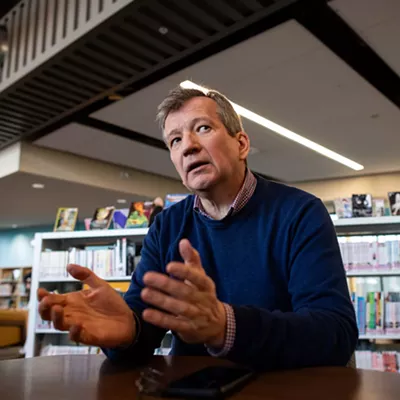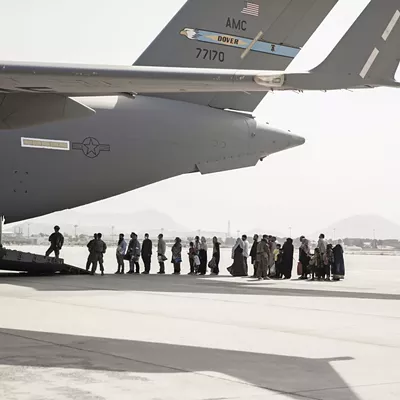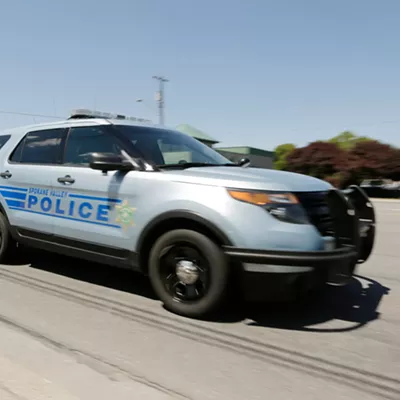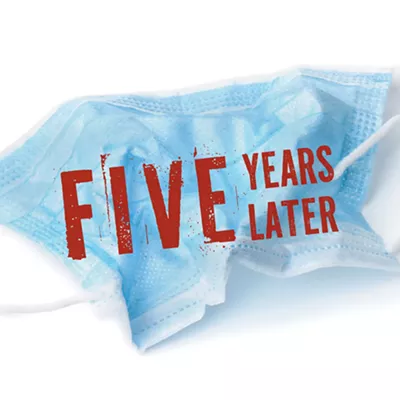When his cell phone went off last Thursday, Sgt. Joseph DeWolf saw he had received a text message from his mother in Colfax, Wash.
“You alright?” the message asked. It was a puzzling message to get from your mom, out of the blue, when you are half a country away and waiting for an Advanced Leadership Training class to resume after a lunch break at Fort Hood.
“Then everybody started getting calls,” DeWolf says. The tank commander with two tours in Iraq suddenly found himself in lockdown with about 15 other combat vets in a cluster of trailers used as classrooms at the Texas Army base.
It was 1:30 in the afternoon and, just up the street to the north, the Soldier Readiness Center was fi lling with gunfi re.
Within minutes, Spokane native Michael Cahill, 62, a civilian physician’s assistant, was among the 13 dead. George
Stratton III, a recently enlisted 18-yearold from Post Falls, was one of 29 wounded in the vicious fusillade of an estimated 100 gunshots.
The suspect in the mass killing, Maj. Nidal Hasan, is a psychiatrist who worked in the same unit as DeWolf, counseling soldiers struggling with post-traumatic stress. News accounts say Hasan, hit by four bullets from police, was apparently distraught over an upcoming deployment. Army criminal investigators, unable to speak with the seriously wounded Hasan until Monday, have yet to establish a motive.
“This was a real gut-punch,” DeWolf says, and the shooting has soldiers like him refl ecting upon another aspect of the “You alright?” question.
“Are people going to look at us different? Are people going to think we’re all spazzed out?” he asks, referring to soldiers dealing with combat stresses and brain injuries.
“On my truck, I have two Purple Heart stickers.
Are people going to see that and think that I’m going to fl ip out? My wife was asking if I was going to take them off,” DeWolf says.
DeWolf is one of those soldiers with acronyms after his name. He’s been diagnosed with PTSD. He has TBI, traumatic brain injury, after being violently blown up several times in Iraq.
In fact, his second tour, outside Sadr City, was cut short when an EFP (explosively formed penetrator) blew a hole in the thick armor of his Abrams battle tank, broke his jaw and left him with severe brain swelling.
That was nearly two years ago, but recovery is slow, and he is still trying to get back in fi ghting shape. “The doctor says I’ll be dealing with it for the rest of my life,” DeWolf says. He’s made great progress, he reports — headaches have lessened and cognitive skills increased.
“But I carry a lot of sticky notes around because I do forget things,” DeWolf says. “I can understand guys who are frustrated because they are wounded in this way. They don’t have the physical scars so people can understand it.”
Thanks to his long recovery, DeWolf’s become so familiar at Fort Hood’s Warrior Transition Unit, where soldiers are counseled and treated for PTSD and brain injuries, that he is on the staff now, in charge of making sure people are in the right programs.
“I think that’s helped more than any therapy — just being back in touch with soldiers and having a purpose again,” he says.
One of the people he’d seen around the unit was Hasan. It was a shock, DeWolf says, when he got another text message during lockdown, from a colleague, that Hasan was named as the shooter.
A doc who counsels soldiers about the trauma they’ve experienced should not, if the allegations are true, create more trauma while violating the sense of safety on base. And it is especially heinous, DeWolf says, that the shootings were in the readiness center.
“That’s where you go to see the combat stress team and all the psychologists. There are guys here who are on their fourth and fi fth deployments. I hope this doesn’t deter people from going there,” for counseling, DeWolf says.





















